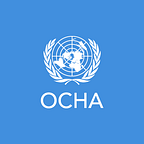“My ears are my eyes”
“My ears are my eyes,” said Oriana Salazar. She suffers from a condition that progressively diminishes her vision. “When I have to go to the market, I feel I am in a maze.”
Honking cars and roaring engines warn Salazar when she is too close to traffic. Footsteps or loud voices let her know if there are people nearby.
Salazar, 32, lives in Carúpano, a city in eastern Venezuela. Her elderly mother has always shopped for the household. But with the COVID-19 pandemic, Salazar prefers that her mother stays home.
A staff member from the non-governmental organization (NGO) Caritas Venezuela accompanies Salazar to the market, which is 6 km away. Caritas’s advocacy in her city helped Salazar understand how to lower the risk the virus presents to her and her family.
One billion people live with a disability (approximatively 15 per cent of the world’s population), 80 per cent of whom live in developing countries. People with disabilities face a higher risk of contracting the virus, according to the World Health Organization. And with few employment opportunities, they are extremely vulnerable members of our community.
The July update of the Global Humanitarian Response Plan (GHRP) shows that the pandemic has exacerbated the vulnerability, stigmatization or marginalization of people with disabilities. Some 22 countries have reported a drop of more than 25 per cent coverage of disability support services since the pandemic began. For example, in Jordan, 88 per cent of people with a physical impairment and with current medical needs reported that they could not visit the hospital for either their regular checks or additional medical needs.
The GHRP recognizes the absence of ways to reach out to more isolated and remote communities. This affects people with disabilities in remote locations, those without family or community networks, and those in institutions, such as residencies or care homes.
The plan calls for efforts to ensure that future progress reports of the GHRP disaggregate and analyse data by sex, age and disability to allow for a meaningful measurement of the impact of the pandemic, and of the response effects on key groups with special needs, such as those with disabilities.
The international NGO Humanity & Inclusion carried out a study in some of its countries of operation. It found that humanitarian staff are insufficiently prepared to adapt their COVID-19 interventions to include people with disabilities and their needs. It also found that people with disabilities already burdened with stigma in some societies feel unsafe, and their ability to access health services during the pandemic is affected.
In our efforts to help people with disabilities, we and our partner organizations have issued messages on applying existing guidelines on inclusion of people with disabilities to the COVID-19 response. The guidance is for field coordinators, camp managers and public health personnel, as well as national and local governments and the wider humanitarian community, including organizations of people with disabilities. We also issued more generic advocacy messages with specific recommendations, which underpin the following steps:
- Ensure that all COVID-19 information is accessible to everyone. For example, in Bosnia and Herzegovina, Grandma’s Letter, written in an easy-to-read style, not only informs children — including those with disabilities — about the virus, but helps them cope with sadness, boredom and other issues. The product was developed by the UN Children’s Fund (UNICEF) in partnership with the country’s Associations of Parents of Children with Autism and Down Syndrome.
2. Ensure all preventive measures are inclusive and accessible. For example, ensuring handwashing stations are easily accessible. The NGO Iraqi Alliance of Disability Organizations has distributed packages containing hand sanitizer, face masks, gloves and soap to alliance members with disabilities living in and around Baghdad.
3. Deliver specific protective measures for persons with disabilities. For example, provide additional or specific hygiene items and supplies. In Macedonia, the civil-society organization HERA, in partnership with Polio Plus, distributed long-lasting food, vitamin supplements, hygiene products and protective equipment to people with disabilities and their personal assistants and caregivers. The initiative was funded by the United Nations Partnership on the Rights of Persons with Disabilities.
4. Disaggregate surveillance data by disability, sex and age when possible. Several UN agencies and their implementing partners are already working towards this. It helps to provide appropriate aid to people based on their requirements.
5. Consult persons with disabilities and their representative organizations when assessing impacts and developing response plans. UN agencies and their partners try to consult as widely as possible. For example, following such consultations, the Ukraine Humanitarian Fund allocated US$2 million to reach vulnerable older people who are self-isolating, including 3,000 people with disabilities, to receive home-based care and assistance. The fund provided electric bikes to local health workers to help vulnerable people at home and their partners;and hygiene kits tailored specifically for people with disabilities. These were delivered to their homes.
6. Ensure that any adaptations to the usual delivery mechanisms of humanitarian assistance consider persons with disabilities. This could include alternative arrangements for food distributions. For example, in Syria, the World Food Programme has deployed mobile ATMs to rural areas in Irbid and Mafraq to address accessibility issues that refugees, especially those with disabilities, face when redeeming their cash assistance in remote areas.
